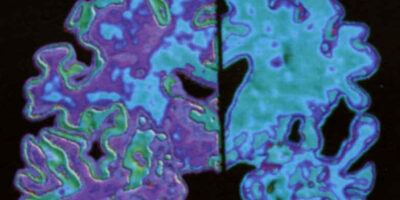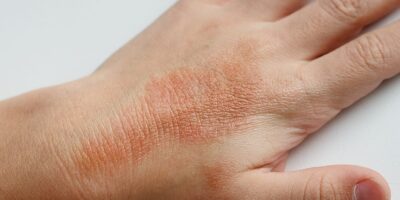The Bioburden Testing Market focuses on methods and technologies used to measure the microbial load (bioburden) in pharmaceutical, biotechnology, medical device manufacturing, and food & beverage industries. Bioburden testing is critical for ensuring that products meet safety and regulatory standards by identifying and quantifying the number of viable microorganisms present in or on a product or surface.
Market Overview:
Bioburden testing helps in detecting contamination during various stages of product development and manufacturing. It plays a key role in sterility assurance, especially for sterile products such as pharmaceuticals, medical devices, and implants. The testing process includes monitoring the microbial load to ensure compliance with industry regulations and guidelines like those set by the U.S. Food and Drug Administration (FDA), European Medicines Agency (EMA), and other global health agencies.
Key Market Drivers:
- Increasing Regulatory Requirements:
- Stricter Standards: Regulatory bodies such as the FDA, EMA, and ISO (International Organization for Standardization) have stringent requirements for microbial contamination control, driving the need for regular bioburden testing.
- GMP (Good Manufacturing Practice): GMP guidelines enforce strict protocols for quality control, where bioburden testing is a crucial part of validation and sterility testing.
- Rising Demand for Biopharmaceuticals and Medical Devices:
- Biologics and Vaccines: With the growth in the biopharmaceutical sector, particularly in the development of vaccines, monoclonal antibodies, and other biologics, the need for contamination control and bioburden testing is increasing.
- Medical Devices: The rise in the production of complex medical devices, including implantable devices and surgical instruments, which must be sterile, is boosting demand for bioburden testing.
- Growth in Sterilization Monitoring:
- Sterility Validation: Bioburden testing is essential for the sterilization validation of medical products and devices to ensure they meet sterility requirements and are free from harmful microorganisms.
- Quality Assurance: As companies prioritize quality assurance processes, bioburden testing becomes vital to prevent contamination and ensure product safety.
- Technological Advancements in Testing Methods:
- Rapid Microbial Detection: The advent of advanced technologies such as Polymerase Chain Reaction (PCR), flow cytometry, and other rapid microbial detection methods have made bioburden testing faster and more efficient.
- Automated Testing Systems: Automated microbial testing systems offer higher accuracy and speed, reducing human error and increasing the throughput of testing.
Market Segmentation:
The bioburden testing market is segmented based on test type, application, end-user, and region.
- By Test Type:
- Aerobic Bioburden Testing: Focuses on detecting aerobic bacteria in samples, which is the most common type of microbial contamination.
- Anaerobic Bioburden Testing: Tests for anaerobic bacteria that thrive in oxygen-free environments, critical for certain product categories.
- Fungal Bioburden Testing: Includes the detection of yeasts and molds, important in ensuring the absence of fungal contamination in pharmaceutical and food products.
- By Application:
- Pharmaceuticals & Biopharmaceuticals: Bioburden testing is widely used in pharmaceutical manufacturing to ensure sterile production environments and to test the microbial content of drug products.
- Medical Devices: Essential for validating the sterility of medical devices and ensuring they meet regulatory standards for microbial control.
- Food & Beverage: Bioburden testing ensures the safety and quality of food and beverage products by monitoring microbial contamination during production.
- Cosmetics: Monitoring microbial load in cosmetic products is crucial to prevent contamination and ensure consumer safety.
- By End-User:
- Pharmaceutical and Biotechnology Companies: The largest consumers of bioburden testing services due to the need for stringent microbial control during drug and biologic production.
- Contract Research Organizations (CROs): Many companies outsource their bioburden testing to CROs for cost efficiency and expertise in testing.
- Medical Device Manufacturers: Manufacturers of sterile medical devices rely on bioburden testing for product safety and regulatory compliance.
- Food & Beverage Industry: Ensures that products meet microbial safety standards to prevent spoilage and foodborne illnesses.
- By Geography:
- North America: The largest market, driven by a highly regulated healthcare industry and a robust pharmaceutical and biotechnology sector.
- Europe: The second-largest market, with stringent regulations in place for product safety in healthcare and food industries.
- Asia-Pacific: Expected to see the fastest growth due to expanding pharmaceutical production, increasing healthcare infrastructure, and growing awareness of product safety.
- Latin America and Middle East & Africa: Emerging markets with growing investments in healthcare and food safety, which will drive the demand for bioburden testing services.
Trends:
- Adoption of Rapid Microbial Testing Methods:
- Faster Results: The shift toward rapid microbial testing methods like PCR-based techniques, which offer faster turnaround times compared to traditional culture-based methods, is gaining popularity.
- Automated Testing Platforms: Automation in bioburden testing is reducing manual error and increasing efficiency, making it easier for companies to comply with regulatory requirements.
- Outsourcing of Bioburden Testing Services:
- Cost-Effectiveness: Many pharmaceutical and medical device companies are outsourcing bioburden testing to third-party laboratories to reduce costs and benefit from specialized expertise.
- Expansion of CROs: Contract Research Organizations are expanding their testing services to meet the growing demand for outsourcing.
- Increased Focus on Sterility Assurance in Pharmaceuticals:
- Biologics and Vaccines: With the surge in biologics and vaccines, especially after the COVID-19 pandemic, there is heightened focus on sterility assurance, leading to increased demand for bioburden testing.
- Regulatory Scrutiny: Regulatory bodies are enforcing stricter sterility testing protocols, driving the need for more frequent and accurate bioburden testing.
Challenges:
- Cost Constraints:
- High Cost of Advanced Testing Technologies: While rapid microbial detection methods offer advantages, they come at a higher cost, which can be a barrier for smaller companies.
- Expensive Equipment: Setting up advanced bioburden testing facilities requires significant investment in equipment and skilled personnel.
- Regulatory Complexity:
- Varying Global Standards: Regulatory requirements for bioburden testing can vary between regions, making it challenging for companies operating internationally to comply with all standards.
- Constantly Evolving Guidelines: Keeping up with the latest guidelines from regulatory agencies such as the FDA and EMA can be complex and require continuous updates to testing protocols.
- Sample Preparation Challenges:
- Complex Sample Matrices: Certain products, such as biologics or highly viscous liquids, present challenges in sample preparation for accurate bioburden testing.
- Detection Limits: Ensuring that testing methods can detect low levels of microbial contamination is crucial, especially for high-risk products like sterile pharmaceuticals.
Future Outlook:
The Bioburden Testing Market is poised for significant growth as the demand for sterility and microbial control in healthcare-related industries continues to rise. The shift toward rapid, automated, and more efficient microbial detection technologies will further drive the market, making testing more accessible and reliable. Expanding pharmaceutical production, increasing medical device manufacturing, and stricter regulatory requirements will continue to shape the future of bioburden testing. As industries place more emphasis on quality control and sterility, bioburden testing will remain a critical component of ensuring product safety and efficacy.
Click Here, To Get Free Sample Report https://stringentdatalytics.com/sample-request/bioburden-testing-market/15783/
Market Segmentations:
Global Bioburden Testing Market: By Company
Charles River Laboratories International
Sigma-Aldrich
SGS
Wuxi Pharmatech (CAYMAN)
Merck
Becton Dickinson
North American Science Associates Inc.
Nelson Laboratories
Pacific Biolabs
ATS Labs
Global Bioburden Testing Market: By Type
Instruments
Consumables
Global Bioburden Testing Market: By Application
Pharmaceutical
Biotechnology
Global Bioburden Testing Market: Regional Analysis
The regional analysis of the global Bioburden Testing market provides insights into the market’s performance across different regions of the world. The analysis is based on recent and future trends and includes market forecast for the prediction period. The countries covered in the regional analysis of the Bioburden Testing market report are as follows:
North America: The North America region includes the U.S., Canada, and Mexico. The U.S. is the largest market for Cold-chain Pharma in this region, followed by Canada and Mexico. The market growth in this region is primarily driven by the presence of key market players and the increasing demand for the product.
Europe: The Europe region includes Germany, France, U.K., Russia, Italy, Spain, Turkey, Netherlands, Switzerland, Belgium, and Rest of Europe. Germany is the largest market for Cold-chain Pharma in this region, followed by the U.K. and France. The market growth in this region is driven by the increasing demand for the product in the automotive and aerospace sectors.
Asia-Pacific: The Asia-Pacific region includes Singapore, Malaysia, Australia, Thailand, Indonesia, Philippines, China, Japan, India, South Korea, and Rest of Asia-Pacific. China is the largest market for Cold-chain Pharma in this region, followed by Japan and India. The market growth in this region is driven by the increasing adoption of the product in various end-use industries, such as automotive, aerospace, and construction.
Middle East and Africa: The Middle East and Africa region includes Saudi Arabia, U.A.E, South Africa, Egypt, Israel, and Rest of Middle East and Africa. The market growth in this region is driven by the increasing demand for the product in the aerospace and defense sectors.
South America: The South America region includes Argentina, Brazil, and Rest of South America. Brazil is the largest market for Cold-chain Pharma in this region, followed by Argentina. The market growth in this region is primarily driven by the increasing demand for the product in the automotive sector.
Key Indicators Analysed
Market Players & Competitor Analysis: The report covers the key players of the industry including Company Profile, Product Specifications, Production Capacity/Sales, Revenue, Price and Gross Margin 2016-2027 & Sales with a thorough analysis of the market’s competitive landscape and detailed information on vendors and comprehensive details of factors that will challenge the growth of major market vendors.
Global and Regional Market Analysis: The report includes Global & Regional market status and outlook 2016-2027. Further the report provides break down details about each region & countries covered in the report. Identifying its sales, sales volume & revenue forecast. With detailed analysis by types and applications.
Market Trends: Market key trends which include Increased Competition and Continuous Innovations.
Opportunities and Drivers: Identifying the Growing Demands and New Technology
Porters Five Force Analysis: The report provides with the state of competition in industry depending on five basic forces: threat of new entrants, bargaining power of suppliers, bargaining power of buyers, threat of substitute products or services, and existing industry rivalry
Click Here, To Buy Premium Report https://stringentdatalytics.com/purchase/bioburden-testing-market/15783/?license=single
The report has helped our clients:
- To describe and forecast the Market size, on the basis of various segmentations and geography, in terms of value and volume
- To measure the changing needs of customers/industries
- To provide detailed information regarding the drivers, restraints, opportunities, and challenges influencing the growth of the Market
- To gain competitive intelligence and uncover new opportunities
- To analyse opportunities in the Market for stakeholders by identifying high-growth segments in Market
- To strategically profile key players and provide details of the current competitive landscape
- To analyse strategic approaches adopted by players in the Market, such as product launches and developments, acquisitions, collaborations, contracts, expansions, and partnerships
About Stringent Datalytics
Stringent Datalytics offers both custom and syndicated market research reports. Custom market research reports are tailored to a specific client’s needs and requirements. These reports provide unique insights into a particular industry or market segment and can help businesses make informed decisions about their strategies and operations.
Syndicated market research reports, on the other hand, are pre-existing reports that are available for purchase by multiple clients. These reports are often produced on a regular basis, such as annually or quarterly, and cover a broad range of industries and market segments. Syndicated reports provide clients with insights into industry trends, market sizes, and competitive landscapes. By offering both custom and syndicated reports, Stringent Datalytics can provide clients with a range of market research solutions that can be customized to their specific needs.
Contact Us
Stringent Datalytics
Contact No- +1 346 666 6655
Email Id- sales@stringentdatalytics.com



Leave a Reply